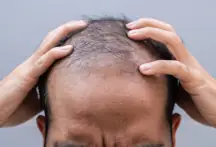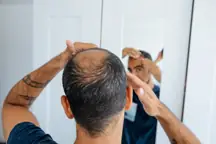If you are bald and are clinging to the hope that there might be a way to reverse it, then science could have you covered.
Hair loss can be a really distressing thing - take it from me, a man who watched his hairline recede and was powerless to stop it.

There are many techniques that can be used to regain some confidence, like toupees, wigs, or a hair transplant.
In my research for my own battles with baldness, I was repeatedly told about rosemary oil, but I never actually gave it a go.
But you aren't here to read me mourn my hair; you want the science behind curing baldness.
Scientists at the San Carlos Clinic in Madrid are making bold claims after a new study revealed their experimental treatment could regrow hair in almost all test subjects, at least in mice, per the Telegraph.
In the study, published in Stem Cell Research & Therapy, both male and female mice were first given dihydrotestosterone (DHT), a compound derived from testosterone that is known to trigger male pattern baldness and thinning hair in women.
Once the mice had gone completely bald, half received injections of stem cells derived from body fat, along with adenosine triphosphate (ATP), a compound that fuels cellular growth. The other half were given a placebo.
The results were striking.
“Hair grew back in all of the treated male mice. In the case of the females, a lower dose was used, and the results were also somewhat worse, although still good, because 90 per cent managed to repopulate their hair,” said Dr. Eduardo López Bran, head of dermatology at the San Carlos Clinic.
While the findings offer fresh hope to the follicle-challenged, it’s still early days. According to the researchers, it could take four to five years before the treatment is ready for public use, as human clinical trials are the next step.

Spain, where the research was conducted, has one of the highest rates of baldness in the world. A survey by online hair loss platform Medihair found that 44.5% of Spanish men experience baldness — the highest percentage globally.
Dr. López Bran noted a surge in demand for hair loss solutions in recent years.
“I noticed a huge increase in inquiries seeking a solution, a truly significant growth in demand, especially among young people who, at the first signs of baldness, want to slow its progression, or even reverse those initial symptoms,” he said.
If the team is looking for human guinea pigs, I am open to a conversation.
